
Marc Ferro was a French historian.

Gérard Chaliand is a French expert in geopolitics who has published widely on irregular warfare and military strategy. Chaliand's analyses of insurgencies in Asia, Africa, Latin America, and the Middle East, mostly based on his field experience with insurgent forces, have appeared in more than 20 books and in numerous newspaper articles. He has worked autonomously throughout his career, unconstrained by the perspectives of national governments and policy institutes. As a result, his work provides an independent perspective on many of the major conflicts characterized the 20th and 21st centuries. He is also a published poet.

Elements from the French Armed Forces used deliberate torture during the Algerian War (1954–1962), creating an ongoing public controversy. Pierre Vidal-Naquet, a renowned French historian, estimated that there were "hundreds of thousands of instances of torture" by the French military in Algeria.
Alain Demurger is a French historian, and a leading specialist of the history of the Knights Templar and the Crusades.
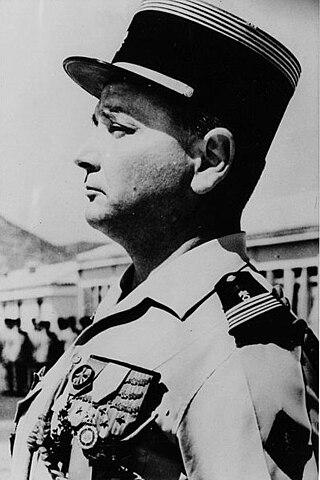
Paul Marie Félix Jacques René Arnaud de Foïard was a général in the French Army who served primarily in the French Foreign Legion taking part in World War II and the conflicts of Indochina and Algeria.
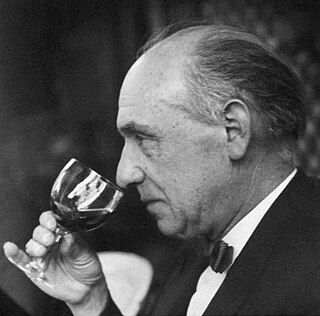
Pierre Gabriel Vincent Ernest Le Roy de Boiseaumarié, nicknamed Baron Le Roy, was a World War I fighter pilot credited with five aerial victories.
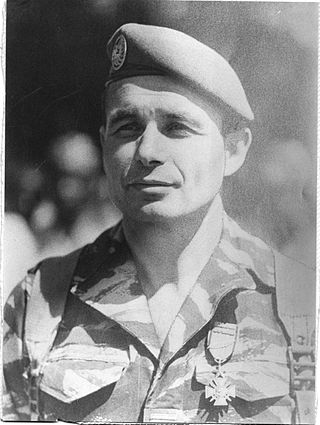
Philippe Louis Edmé Marie François Erulin was a senior French military officer. He is best known as the Colonel Commandant of the 2nd Foreign Parachute Regiment 2e REP, who directed the military intervention in Zaïre during the Shaba II conflict against rebels of the Congolese National Liberation Front (FLNC).
Jeannou Lacaze, was a French Général d'armée of the French Army and Chef d'État-Major des armées (1981-1985), who also served in the French Foreign Legion.
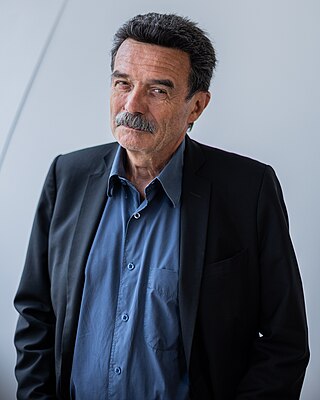
Hervé Edwy Plenel is a French political journalist.

Bernard Janvier is a former general of the French Army who served in the French Foreign Legion, primarily spearheading and putting in place effective resolving forces.

Emmanuel Roberto Goffi is a French philosopher of technologies and, more specifically, an artificial intelligence ethicist. He has served in the French Air Force for 27 years. He is the co-founder and co-director of the Global AI Ethics Institute in Paris. He is also an instructor and research associate with the Frankfurt Big Data Lab at the Goethe University Frankfurt in Germany and a research fellow with the Centre for Defence and Security Studies at the University of Manitoba, Winnipeg, Manitoba in Canada. After having worked on military ethics, and more precisely on ethics applied to Lethal autonomous weapon, his focus has turned to ethics applied to Artificial intelligence.
Serge Groussard was a French journalist and writer, the son of colonel Georges Groussard and Véra Bernstein-Woolbrunn.

Admiral Georges Cabanier was a French Naval Officer and Admiral, in addition to Grand Chancellor of the Legion of Honour.
Jacques Lefort was a Général de corps d'armée of the French Army and Commandant of the Foreign Legion.

Hervé Charpentier is a Général d'armée of the French Army.

Lucette Valensi is a French historian néeLucette Chemla in Tunis.

The Armistice Army or Vichy French Army was the armed forces of Vichy France permitted under the terms of the Armistice of 22 June 1940. It was officially disbanded in 1942 after the German invasion of the "Free Zone" which was directly ruled by the Vichy regime.
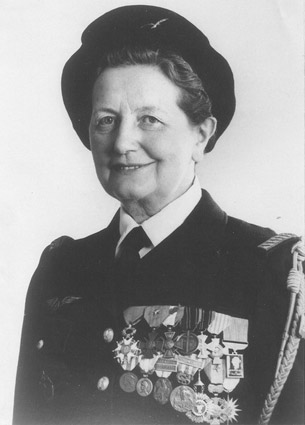
Suzanne Henriette Jannin, also Suzanne Henriette Delvoye, (1912–1982) was a French dentist, a resistance fighter in World War II, and an air force pilot in Indochina. After receiving her military pilot's licence in 1948, she gave up dentistry to devote herself to aviation. From 1951, she undertook French Air Force reconnaissance missions in the Far East until she returned to France in 1954. In 1957, she once again took up dentistry opening a practice in Paris.
Laurent Preziosi was a French Resistance member, most notable as one of the first four volunteers for Operation Pearl Harbour sent to Corsica on 11 December 1942 aboard the Casabianca to coordinate resistance networks ready for landings to liberate the island from German and Italian occupation.

The Mouvement populaire du 13-Mai, or the MP-13, was an extreme-right-wing French political party formed after the failure of the French Fourth Republic and the onset of the Fifth Republic.














